Posts Tagged: personal
House passes bill that would bar data brokers from selling Americans’ personal information to ‘adversary’ countries
The House of Representatives approved a measure targeting data brokers’ ability to sell Americans’ personal data to “adversary” countries, like Russia, China, Iran and North Korea. The Protecting Americans’ Data from Foreign Adversaries Act passed with a unanimous 414 – 0 vote.
The bill, which was introduced alongside a measure that could force a ban or sale of TikTok, would prohibit data brokers from selling Americans’ “sensitive” data to people or entities in “adversary” countries. Much like a recent executive order from President Joe Biden targeting data brokers, the bill specifically covers geolocation, financial, health, and biometric data, as well as other private information like text logs and phone call history.
If passed — the bill will need Senate approval before landing on Biden’s desk — it would represent a significant check on the relatively unregulated data broker industry. US officials have previously warned that China and other geopolitical rivals of the United States have already acquired vast troves of Americans’ information from brokers and privacy advocates have long urged lawmakers to regulate the multibillion-dollar industry.
The bill is the second major piece of bipartisan legislation to come out of the House Energy and Commerce this month. The committee previously introduced the “Protecting Americans from Foreign Adversary Controlled Applications Act,” which would require TikTok to divest itself from parent company ByteDance or face a ban in the US. In a statement, Representatives Frank Pallone and Cathy McMorris Rodgers, said that the latest bill “builds” on their work to pass the measure targeting TikTok. “Today’s overwhelming vote sends a clear message that we will not allow our adversaries to undermine American national security and individual privacy by purchasing people’s personally identifiable sensitive information from data brokers,” they said.
This article originally appeared on Engadget at https://www.engadget.com/house-passes-bill-that-would-bar-data-brokers-from-selling-americans-personal-information-to-adversary-countries-004735748.html?src=rss
Engadget is a web magazine with obsessive daily coverage of everything new in gadgets and consumer electronics
Hitting the Books: NASA’s Kathy Sullivan and advances in orbital personal hygiene
For the first couple decades of its existence, NASA was the epitome of an Old Boys Club; its astronaut ranks pulled exclusively from the Armed Services’ test pilot programs which, at that time, were exclusively staffed by men. Glass ceilings weren’t the only things broken when Sally Ride, Judy Resnik, Kathy Sullivan, Anna Fisher, Margaret “Rhea” Seddon and Shannon Lucid were admitted to the program in 1978 — numerous spaceflight systems had to be reassessed to accommodate a more diverse workforce. In The Six: The Untold Story of America’s First Women Astronauts, journalist Loren Grush chronicles the numerous trials and challenges these women faced — from institutional sexism to enduring survival training to navigating the personal pressures that the public life of an astronaut entails — in their efforts to reach orbit.
Adapted from The Six: The Untold Story of America’s First Women Astronauts by Loren Grush. Copyright © 2023 by Loren Grush. Excerpted with permission by Scribner, a division of Simon & Schuster, Inc.
Above the Chisos Mountains sprawling across Big Bend National Park in West Texas, Kathy [Sullivan, PhD, third woman to fly in space and future head of the NOAA] sat in the back seat of NASA’s WB-57F reconnaissance aircraft as it climbed higher into the sky. The pilot, Jim Korkowski, kept his eye on the jet’s altimeter as they ascended. They’d just passed sixty thousand feet, and they weren’t done rising. It was a dizzyingly high altitude, but the plane was made to handle such extremes.
Inside the cockpit, both Kathy and Jim were prepared. They were fully outfitted in the air force’s high-altitude pressure suits. To the untrained observer, the gear looked almost like actual space suits. Each ensemble consisted of a bulky dark onesie, with thick gloves and a thick helmet. The combination was designed to apply pressure to the body as the high-altitude air thinned away and made it almost impossible for the human body to function.
The duo eventually reached their target height: 63,300 feet. At that altitude, their pressure suits were a matter of life and death. The surrounding air pressure was so low that their blood could start to boil if their bodies were left unprotected. But with the suits on, it was an uneventful research expedition. Kathy took images with a specialized infrared camera that could produce color photos, and she also scanned the distant terrain in various wavelengths of light.
They spent just an hour and a half over Big Bend, and the flight lasted just four hours in total. While it may have seemed a quick and easy flight, Kathy made history when she reached that final altitude above West Texas on July 1, 1979. In that moment, she flew higher than any woman ever had, setting an unofficial world aviation record.
The assignment to train with the WB-57 had scared her at first, but Kathy wound up loving those high-flying planes. “That was very fun, other than this little bit of vague concern that, ‘Hope this doesn’t mean I’m falling off the face of the Earth,’” Kathy said. The assignment took her on flights up north to Alaska and down south to Peru. As she’d hoped, she received full qualification to wear the air force’s pressure suits, becoming the first woman to do so. Soon, donning a full-body suit designed to keep her alive became second nature to her.
NASA officials had also sought her out to test a new piece of equipment they were developing for future Shuttle astronauts, one that would let people relieve themselves while in space. During the Apollo and Gemini eras, NASA developed a relatively complex apparatus for astronauts to pee in their flight suits. It was, in essence, a flexible rubber cuff that fit around the penis, which then attached to a collection bag. The condom-like cuffs came in “small,” “medium,” and “large” (though Michael Collins claimed the astronauts gave them their own terms: “extra large,” “immense,” and “unbelievable”). It was certainly not a foolproof system. Urine often escaped from beneath the sheath.
Cuffs certainly weren’t going to work once women entered the astronaut corps. While the Space Shuttle had a fancy new toilet for both men and women to use, the astronauts still needed some outlet for when they were strapped to their seats for hours, awaiting launch or reentry. And if one of the women was to do a spacewalk, she’d need some kind of device during those hours afloat. So, NASA engineers created the Disposable Absorption Containment Trunk (DACT). In its most basic form it was . . . a diaper. It was an easy fix in case astronauts needed to urinate while out of reach of the toilet. It was designed to absorb fecal matter, too, though the women probably opted to wait until they reached orbit for that.
Kathy was the best person to test it out. Often during her high-altitude flights, she’d be trapped in her pressure suit for hours on end, creating the perfect testing conditions to analyze the DACT’s durability. It worked like a charm. And although the first male Shuttle fliers stuck to the cuffs, eventually the DACT became standard equipment for everyone.
After accumulating hundreds of hours in these pressure suits, Kathy hoped to leverage her experience into a flight assignment, one that might let her take a walk outside the Space Shuttle one day. As luck would have it, she ran into Bruce McCandless II in the JSC gym one afternoon. He was the guy to know when it came to spacewalks. NASA officials had put him in charge of developing all the spacewalk procedures and protocols, and at times he seemed to live in the NASA pools. Plus, he was always conscripting one of Kathy’s classmates to do simulated runs with him in the tanks. Kathy wanted to be next. Projecting as much confidence as she could, she asked him to consider her for his next training run.
It worked. Bruce invited Kathy to accompany him to Marshall Space Flight Center in Alabama to take a dive in the tank there. The two would be working on spacewalk techniques that might be used one day to assemble a space station. However, the Space Shuttle suits still weren’t ready to use yet. Kathy had to wear Apollo moonwalker Pete Conrad’s suit, just like Anna had done during her spacewalk simulations. But while the suit swallowed tiny Anna, it was just slightly too small for Kathy, by about an inch. When she put it on, the suit stabbed her shoulders, while parts of it seemed to dig into her chest and back. She tried to stand up and nearly passed out. It took all her strength to walk over to the pool before she flopped into the tank. In the simulated weightless environment, the pain immediately evaporated. But it was still a crucial lesson in space-suit sizes. The suits have to fit their wearers perfectly if the spacewalk is going to work.
The session may have started off painfully, but once she began tinkering with tools and understanding how to maneuver her arms to shift the rest of her body, she was hooked. She loved spacewalking so much that she’d go on to do dozens more practice dives throughout training.
But it wasn’t enough to practice in the pool. She wanted to go orbital.
This article originally appeared on Engadget at https://www.engadget.com/hitting-the-books-the-six-loren-grush-scribner-143032524.html?src=rss
Engadget is a web magazine with obsessive daily coverage of everything new in gadgets and consumer electronics
Google adds a private locked photos folder to iPhones for ‘personal’ photos
Google rolls out a slew of privacy-focused tools for Android and iOS in honor of Cybersecurity Awareness Month.
Android | Digital Trends
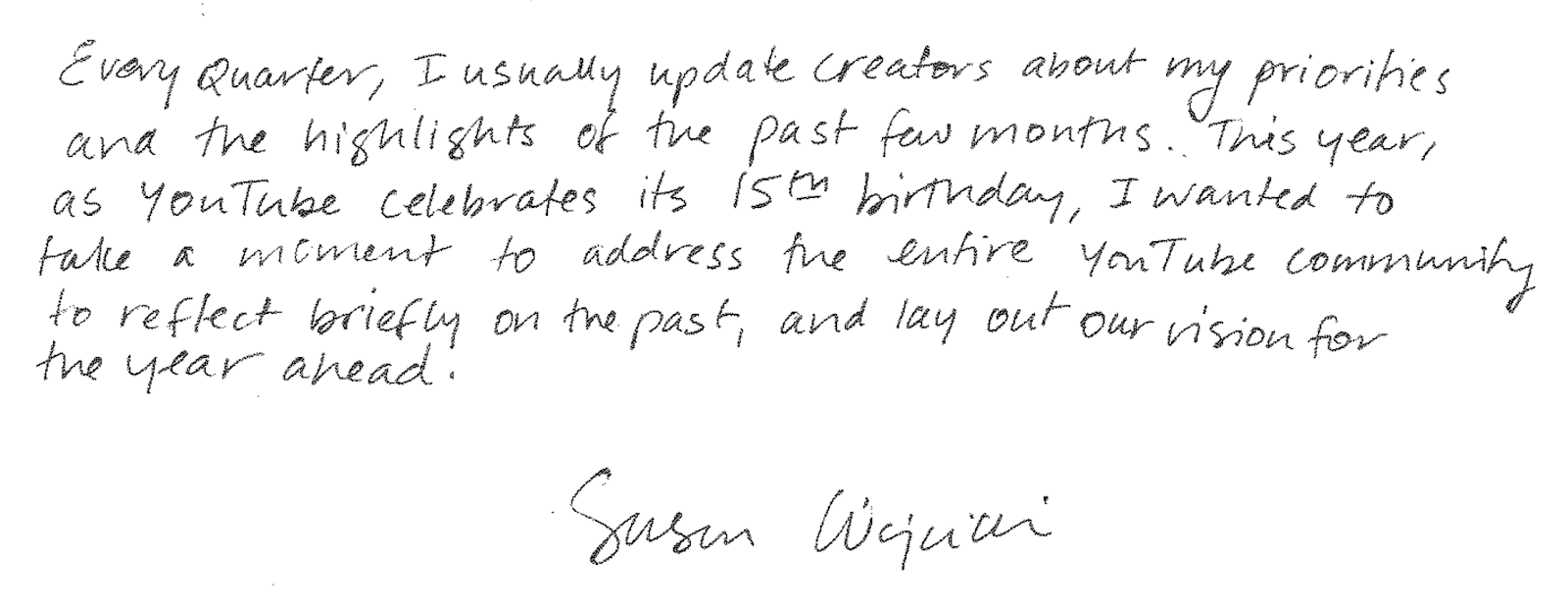
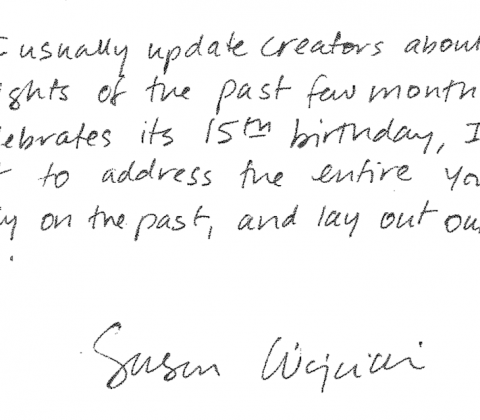
YouTube at 15: My personal journey and the road ahead
15 years ago today, YouTube took a small step toward starting something big. On February 14, 2005, YouTube was registered as a website. Its founders wanted to create a way for people around the world to share videos. Soon after, the first video — “Me at the zoo” — was uploaded, and before the end of the year, the site was receiving millions of views a day.
Just miles away at Google’s headquarters, I had begun working with colleagues to see how people would use online video. Much to our surprise, users all over the world wanted to upload their videos to share their stories. But what surprised me even more was that so many others wanted to watch these videos about everyday life: funny dances, kids making cute unexpected comments, and, of course, lots of cat videos. These videos entertained us, but they also showed there was something very human about connecting through online video. While traditional media often showed polished and perfected versions of life, this medium was different; it had a raw, honest, and authentic feel.
As YouTube began to take off, it became clear that the company would need significant capital investment to support its growth, so YouTube decided to sell to another company. I, along with Salar Kamangar, made the case to bring the companies together. After the acquisition, founder Chad Hurley became CEO, then Salar, and I was incredibly honored to become YouTube’s third CEO six years ago.
Fast forward to today, and YouTube has more than two billion monthly users around the world, and 500 hours of video uploaded every minute. Looking ahead in 2020, we’re focused on making YouTube a place where everyone has a voice and can see the world as we:
- Grow the creator ecosystem to be the best place for creators. Creators are the heart of YouTube, and they’re pioneering new content by vlogging about their lives, covering topics like gaming, fitness, comedy, hobbies, makeup tutorials, and every kind of How To imaginable. Want to fix that 10 year old refrigerator or car? YouTube likely has the video to replace every single part, and in multiple languages! Creators are at the cutting edge of culture and also becoming next generation media companies, boosting local economies with new jobs. Compared to last year, the number of creators earning five figures annually has increased more than 40 percent. And more than 170,000 YouTube channels around the world have over 100,000 subscribers — that’s hundreds of thousands of small businesses growing through the platform. YouTube is unique as a platform since we share the majority of revenue with our creators. Going forward, our goal is to continue to grow revenue and audiences of YouTube creators. We appreciate everything creators do to inspire, educate, and entertain their audiences. We know their fans appreciate them, too, and today we’re launching the third annual #LoveNotes campaign. Click here to show support for your favorite creators.
- Partner with the music industry to grow revenue, break new artists and promote music. YouTube offers twin engines for revenue with advertising and subscribers, paying out more than $ 3 billion to the music industry last year from ads and subscriptions. We’re also partnering with artists to support and amplify their work through every phase of their career. Dua Lipa was in YouTube’s first-ever Foundry program — our initiative to develop independent music acts. Justin Bieber and Billie Eilish have built massive global audiences by directly connecting and engaging with fans on YouTube. At just 18 years old, Billie is now one of the world’s biggest stars with five recent Grammy wins. And from its early days, YouTube has been a home for artists who found creative ways to use the platform to help expand their reach. In 2005, OK Go had one of the first viral hits with their music video, “A Million Ways.” Fans posted their own versions of the boy band-inspired choreography, and OK Go decided to make it official with a dance challenge on YouTube. We continue to see unknown artists make it big with a single viral hit. Last year, Lil Nas X’s “Old Town Road” became a YouTube phenomenon and the longest-leading single atop the Billboard Hot 100.
- Work with media companies to extend their audiences through time shifting, new geographies and new users. We’re also boosting awareness of subscription services, sports and news highlights, long-form content, and movies with trailers and clips. And we’re connecting networks and media partners to a consumer base that is increasingly cutting the cord. Today, YouTube TV has more than 2 million subscribers, and our service has expanded nationwide in the U.S., offering access to more than 70 channels, including cable networks, live sports, and on-demand programming.
- Help advertisers big and small find more customers. Advertisers recognize the reach and effectiveness of YouTube to build awareness, improve consideration, and drive results. In 2020, we’ll continue to make our solutions simpler and more effective, while keeping responsibility front of mind. We’ve spent the last three years working to strike the right balance between what advertisers think of as brand safety and what creators think of as demonetization. We continue to develop tools that give advertisers confidence about where their ads run. We’re also working to offer more transparency and certainty to creators with more guidance on our advertiser-friendly guidelines and an expansion of our creator self-certification program.
- Continue to be a place where users come to laugh and to learn. YouTube has become the world’s largest video library, a place where people come to be entertained, watch their favorite creators, get help with homework, learn a new hobby, see the latest music video and find community. We’ve seen the ways video is an effective medium for learning — users can see how to do something and repeat the lesson as many times as needed! Whether it’s help with a math class for college or learning how to sew and becoming an entrepreneur, we know YouTube is a key force for learning. To amplify this positive impact, we’re investing in quality family content, including our $ 100 million fund dedicated to the creation of thoughtful, original children’s content on YouTube and YouTube Kids.
With these new opportunities have come new challenges around responsibility. From the very first days, we realized the importance of setting the rules of the road with Community Guidelines. Over the years, we’ve built on our commitment to protect the YouTube community. While YouTube is clearly a platform — our focus as a company is to distribute the content produced by others — that doesn’t mean we don’t have responsibility. This is my number one focus, and we will continue to do the hard work to make sure that we’re on the right side of history.
We think about our responsibility efforts in terms of 4 Rs:
- We remove content that violates policies as quickly as possible. In Q3 of last year alone, we removed more than 8.7 million videos.
- We raise up authoritative voices in searches and recommendations for news and other types of sensitive information.
- We reduce our recommendations of content that brushes up against our policies. We’ve reduced watchtime of borderline content from non-subscribed recommendations in the U.S. by more than 70 percent. Last year we launched these efforts in other markets, including Brazil, France, Germany, and Mexico. And we started 2020 with launches in Italy and Japan, with plans to continue to expand throughout the year.
- And we reward content that meets our even higher bar for monetization.
We’re proud of the work we’ve done over the past three years to raise the bar on responsibility. Over the past two years, we’ve made more than 50 policy changes, often in consultation with relevant outside experts around the world who help us craft guidelines that will protect our community in the long run. Today, problematic content is only a fraction of one percent of what’s watched on YouTube, and we want to drive that number down even more. And as the U.S. presidential election approaches, we will continue to balance openness with responsibility by ensuring that YouTube is a reliable source for information. Our efforts include raising up authoritative election news and removing bad actors and misleading content.
Over the next few months, we’ll be celebrating the moments that led up to the public launch of YouTube in May 2005. As I look back on my journey with online video over the past 15 years, I feel incredibly privileged to have been part of these key moments. What inspires me as CEO of YouTube are the stories I hear everyday of how YouTube enabled someone to build a business, gain new skills, laugh, cry, and connect with others. While I don’t know what the next 15 years will bring, I’m certain that YouTube will continue to empower the next generation of storytellers and enrich all our lives.
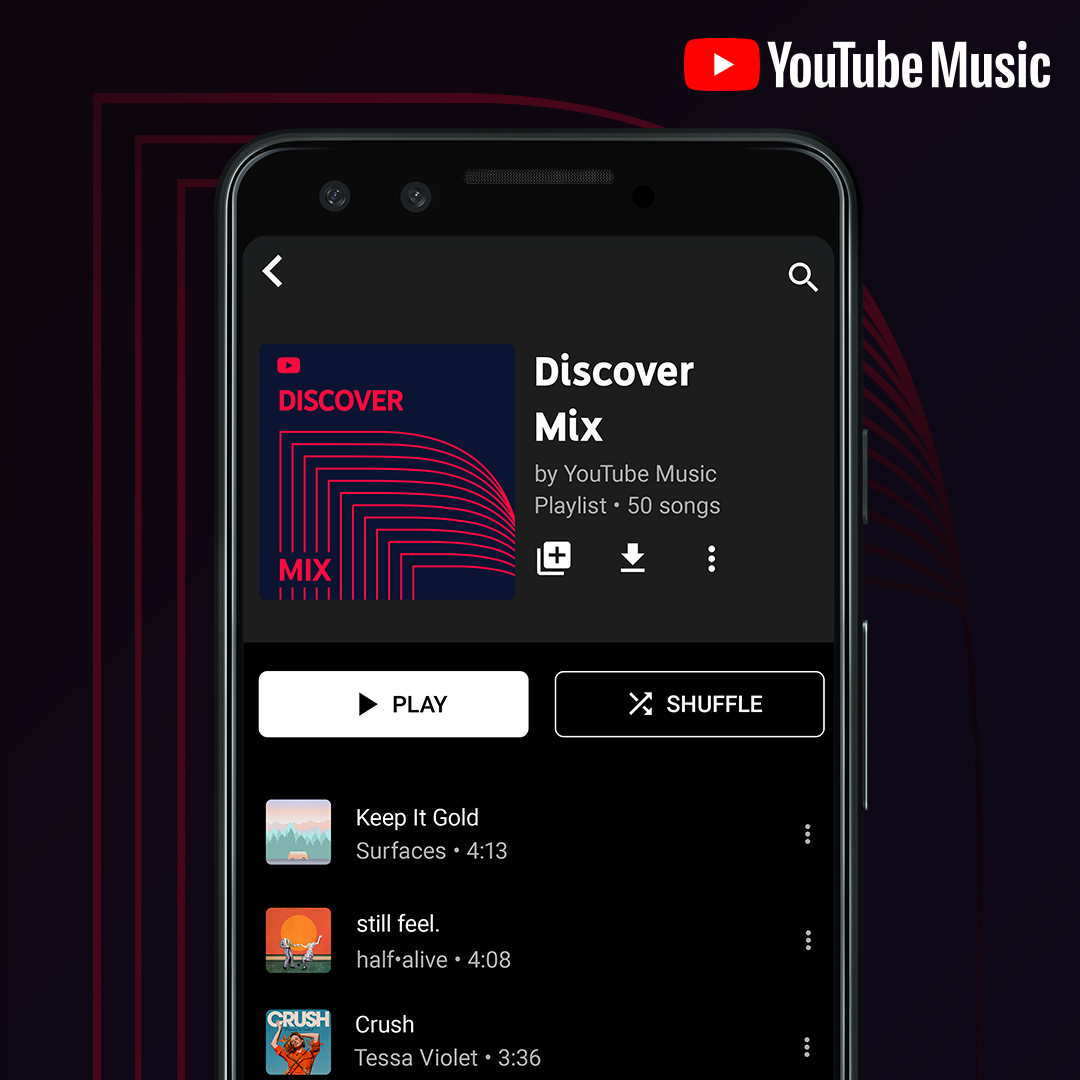
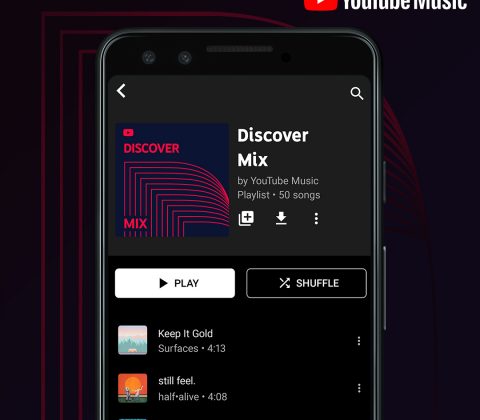
YouTube Music makes discovery more personal with playlists mixed for you
YouTube Music is a dedicated music streaming service that guides you through the world of music. With official songs and albums as well as deep cuts, live performances, and remixes, you can listen to exactly what you want, when you want to. Or you can sit back and let us recommend music for you right on your home screen.
Rolling out today, we’re introducing a shelf of three personalized mixes – the new Discover Mix, New Release Mix, and Your Mix – to keep you up to date on what’s just been released and introduce you to a wider range of artists and sounds based on your personal taste. Updated regularly, these mixes will use your listening history to create a unique experience and guide your music exploration to exciting and fresh destinations week after week.
Check out what each of these new mixes is bringing to you:
Discover Mix: Whether introducing you to an entirely new artist you’ve never heard before, or unearthing hidden, lesser-known gems from artists you’re already familiar with, Discover Mix will give you 50 tracks every week that help you expand your musical horizons. With new updates every Wednesday, it’s your go-to playlist to discover music.
New Release Mix: This mix is your one-stop shop for a playlist of all the most recent releases by your favorite artists (and others we think you’ll like). Expect a big update every Friday (when most new releases drop) along with mid-week releases sprinkled in throughout the week to ensure you are always up-to-date on the latest releases.
Your Mix: Your Mix is the perfect playlist for those times when you don’t want to think and just want to play something you know you’ll like. It’s full of songs by artists you know and love, and also mixes in some songs and artists you’ve never heard before, but that we think you’ll love. Small updates are made regularly, so the music never gets stale and there’s always something new in rotation.
The more you listen to and like songs, the better your mixes will be. New to YouTube Music? Don’t worry, we can start delivering a personalized experience after you’ve selected a couple of artists you like during setup, or even after listening to just a few songs!
Discover Mix, New Release Mix, and Your Mix are now available globally for all YouTube Music listeners. To check out your personalized mixes, download the YouTube Music app for iOS or Android or visit the webplayer to dive in.
These new mixes are just the beginning of an even more personalized YouTube Music, so stay tuned for more music mixed just for you!
Nathan Lasche, Product Manager – YouTube Music, recently listened to “Dance Monkey by Tones and I“
Ask Engadget: How can I make a gift card feel more personal?

Engadget RSS Feed
EA leaks personal data for ‘FIFA 20’ Global Series players

Engadget RSS Feed
US, UK regulators ask Facebook how Libra will protect personal data

Engadget RSS Feed
2019 Brandcast stage highlights: Primetime is now personal
Today, people want to watch videos that relate to their interests and passions – whenever they choose, on any device. For some of us, it’s guitar lessons, but for others, it’s baking their own masterpiece alongside experts like How to Cake It. Everyone’s primetime is personal, and what you watch often reflects who you are.
There’s no better place than YouTube to find the creators, music and shows that you love. And that’s why YouTube is #1 in reach and watchtime among ad-supported streaming media, according to Comscore.1
For advertisers, this means being able to reach people who are increasingly cutting the cord. In fact, YouTube now reaches more 18 to 49 year-olds in an average week than all cable TV networks combined.2
Tonight, at our eighth annual Brandcast event, we celebrated the creator, entertainment and music content that audiences love on YouTube. We also showcased new ways we can better help brands reach viewers in an on-demand world.
It’s all about the engagement and results
YouTube is focused on helping brands reach their audiences and drive business impact. To deliver this, we announced that Nielsen Total Ad Ratings (TAR) is now supported on YouTube. This lets brands compare YouTube and TV reach apples-to-apples.
Across the 20 Total Ad Ratings (TAR) studies we’ve commissioned with Nielsen for brands like Colgate and the U.S. Navy, YouTube has consistently driven incremental reach at a more balanced frequency compared to TV.3
And across all Marketing Mix Modeling studies we’ve commissioned from Nielsen in the past two years that measured Google Preferred, we had greater sales per impression than TV in every one of them.4
To give advertisers more opportunities to validate their investments, we announced that Nielsen Catalina Solutions (NCS) Sales Lift will be available for Google Preferred campaigns before the end of 2019. The tool helps brands measure the lift in offline sales for U.S. consumer packaged goods brands, and provide deeper performance insights across audiences, creative and more.
Karate-chopping the paywall: Bringing more YouTube Originals to advertisers
From Hollywood celebrities to top YouTube creators, YouTube Originals deliver the content audiences love. We saw this reflected in last year’s star-powered slate, which amassed over 2.5 billion views across 50 shows like Will Smith’s “The Jump” or Liza Koshy’s “Liza on Demand.”5
But some of our best content was still behind the paywall, including “Step Up: High Water,” which achieved unprecedented viewership for its season two premiere, and “Cobra Kai,” the critically acclaimed reboot of the 1984 classic “The Karate Kid.” In its rookie season, “Cobra Kai” received 11 award nominations (including an Emmy nomination), the Golden Tomato Award for Best TV Drama and a 100-percent rating on Rotten Tomatoes – making it the highest-reviewed reboot of all time. And just after its season two premiere last week, which reached 20 million views in six days, Parrot Analytics confirmed Cobra Kai is the most in-demand digital original series in the world right now.6
Today, we announced that all new YouTube Original series and specials will soon be available for fans around the world to watch for free with ads — just like they enjoy other content on the platform. And we are excited to confirm this includes the renewal of “Cobra Kai” for season three.
This gives advertisers more opportunities to engage with a broader audience, drive meaningful results and align with top Hollywood talent and YouTube creators.
Our new slate builds upon the success of our first two years. We’re continuing to focus on stories that delight us from our favorite personalities, inspire us through rich cultural moments and educate us on topics that matter. From returning hits like “Kevin Hart: What the Fit” and “Liza on Demand” to new shows — with Dude Perfect, Markiplier and a top secret project with Justin Bieber — the slate celebrates the diversity, authenticity and spirit characteristic of the YouTube community.
YouTube Originals will be available to advertisers through bespoke sponsorships or Google Preferred lineups.
More music live streams, more opportunities for brands
Last month, YouTube’s live stream of Coachella’s first weekend was the most viewed yet, earning over 82 million live views — an increase of over 90 percent compared to 2018.7
After nine years of success in the desert, we’re doubling down on music festivals, starting with a new two-year partnership to live stream Lollapalooza this August. In addition to the curated live stream over the four-day festival, for the first time ever, fans will get additional custom content that gives them unique access to the festivals’ artists.
These key moments in music, along with other cultural events like YouTube FanFest, provide more opportunities to reach audiences with the content they are most passionate about.
The magic of Google Preferred
Google Preferred represents among the best content on YouTube.
To help advertisers better reach their audience, we’re evolving our Google Preferred offering to reflect changing viewing habits, and help advertisers connect with those viewers where they are.
Our proprietary algorithm, the P-Score, looks at the popularity and viewer passion of specific content — things like the amount of repeat views and how often videos are shared to keep Google Preferred Lineups fresh. It also draws on protection, which places a greater emphasis on content suitability where Google Preferred Lineup ads will only serve on videos that are reviewed first by machine classifiers, then verified by humans.
Tonight, we shared that we’re adding two new ways to help the P-Score be even more useful to brands. There’s platform (for videos frequently watched on larger screens) and production (for content that has higher production values like advanced camera work or sound quality) to bring more high-quality inventory into Google Preferred.
Where our TV offering is going and how it’s growing
Our TV offering comes in two parts: The first is YouTube on TV screens, which is the YouTube app optimized for Internet-connected TVs. Tonight, we shared that connected TVs represent our fastest growing screen, where watch time now tops 250 million hours per day.8
The second is YouTube TV, which launched two years ago to give people a new and reimagined way to enjoy cable-free live TV along with the best of YouTube content. Now with over 70 broadcast and cable channels, YouTube TV is available nationwide and will be accessible as a standalone lineup in Google Preferred this upfront season. This change, along with audience guarantees and show-level exclusions, allows advertisers to zero in on live and on-demand inventory. And most importantly, brands can go beyond demographics to reach audiences based on their interests – just like with the core Google Preferred offerings.
For today’s viewers, primetime is personal. With this expanded offering, advertisers and brands can reach and influence audiences on proven platforms like YouTube.
Check out #Brandcast to see highlights from the night.
Kate Stanford, Head of Global Advertiser Marketing at YouTube, whose personal primetime includes PostmodernJukebox, Mark Rober and First We Feast.
1 Comscore OTT Intelligence and Custom Reporting based on Total Home Panel, September 2018, U.S
2 Google commissioned Nielsen study, U.S., May 2018. People age 18-49. Average weekly reach for Cable TV and YouTube (includes mobile, desktop, and living room devices)
3 “Nielsen Total Ad Ratings (TAR) Meta Analysis, including all 20 TAR US studies inclusive of YouTube in-app traffic commissioned by Google running from January 2018 to March 2019 across desktop, mobile and TV. Incremental Reach Value calculated as YouTube’s on-target incremental reach / YouTube’s Total on-target Reach. Standard Deviation 22%. On Target Frequency calculated as On Target Impressions / On Target Reach. Standard Deviation 6.5
4 Commissioned Nielsen MMM Meta-Analysis, US 2017-2018. Base: all the studies Google commissioned in 2017 and 2018 where Google Preferred Lineups was measurable, a total of 20 MMM across 3 categories. Count based on incremental offline retail sales measured as two-tailed significance > 90%. Effectiveness is defined as incremental sales per impression. Incremental offline retail sales measured for TV represents average across all TV broadcasters. calculated as On Target Impressions / On Target Reach. Standard Deviation 6.5
5 YouTube Originals YouTube Analytics, Global, Jan 2018-Dec 2018
6 YouTube Internal Data, Global, [Apr 24-30, 2019]; Parrot Analytics, [Apr 24-30, 2019]
7 Youtube Internal Analytics, Global, April 2019
8 YouTube Internal Data, Global, March 2019. Based on 90 day average of WatchTime for Living Room Devices, which include smart TVs, Roku/Apple TV, and game consoles
Fitness app PumpUp left users’ personal data exposed on server

Engadget RSS Feed


Netflix’s next original is a personal kind of superhero story
 Finding superhero stuff on Netflix isn't difficult whatsoever, but the streaming service and actor Michael B. Jordan have a new type of origin story in mind. Raising Dion asks what it'd be like to, as its name suggests, raise one from childhood. Dion…
Finding superhero stuff on Netflix isn't difficult whatsoever, but the streaming service and actor Michael B. Jordan have a new type of origin story in mind. Raising Dion asks what it'd be like to, as its name suggests, raise one from childhood. Dion…
Engadget RSS Feed
Facebook fined in Spain for allegedly misusing personal data
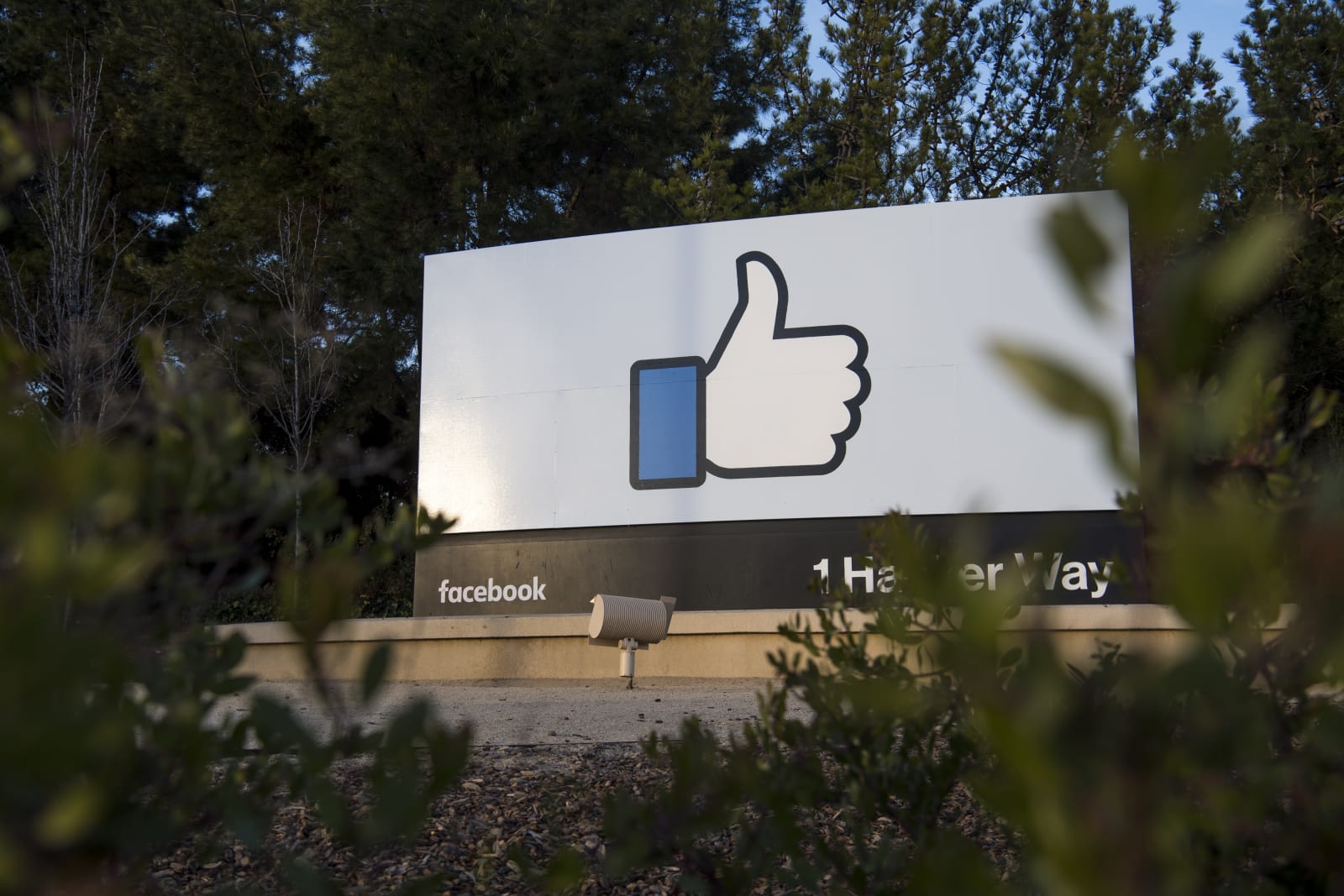
Engadget RSS Feed
Enjoy your personal concert with VR videos on YouTube
Any music fan will tell you, there’s nothing better than seeing your favorite band live. But if you’re one of the millions of people who can’t make it to a show, YouTube is giving you the next best thing. We’re working with some amazing artists to bring you live performances and music videos in VR.
And today Gorillaz – hailed by “The Guinness Book Of World Records” as the planet’s Most Successful Virtual Act – have announced their return with the release of a new video directed by Jamie Hewlett, featuring four tracks from their highly anticipated forthcoming album “Humanz.” The epic six-minute animated film – titled “Saturnz Barz (Spirit House)” – provides an extraordinary cutting-edge VR experience to include the track “Saturnz Barz” in full, plus highlights of “Ascension,” “Andromeda” and “We Got The Power.” You can check it out here fresh from the oven.
With these new immersive experiences, you can transport yourself to top music festivals and killer concerts, without having to deal with the crowds. This weekend, you can check out Ultra Music Festival live, with a set from Hardwell live streaming in 360 degrees. And you can already experience highlights from Coachella on YouTube, without having to bear the heat of the desert.
We’ve also been working with some of your favorite artists to experiment with new ways to tell the story behind their songs and allow you to be immersed in the video. Sit next to Sampha on the piano bench while he performs “(No One Knows Me) Like The Piano.” Step into Hunter Hayes’ recording studio as he builds each musical component of his current single, “Yesterday’s Song.” Check out Young The Giant’s latest single, “Silvertongue,” as though you were in the audience. Watch The Naked & Famous official music video for “Higher” shot at the YouTube Space LA. And you can use VR to travel behind the scenes, too. Check out Florida Georgia Line as they shoot “May We All” at the Tennessee National Raceway in Hohenwald.
You can watch these videos using the YouTube VR app available on Daydream or with Google Cardboard. If you don’t have a headset, don’t worry, you can still get the 360-degree video experience on your mobile phone or desktop. It’ll be like you’re virtually there with your favorite band.
Vivien Lewit, Global Head Artist Relations, recently watched “The Range – Florida (Official 360° Video).”
Google will use your health data to help make Fit a better personal coach
Google is using your health data to make Google Fit better and that is only going to continue as the app becomes more of your personal assistant, at least according to a recent interview.
The post Google will use your health data to help make Fit a better personal coach appeared first on Digital Trends.
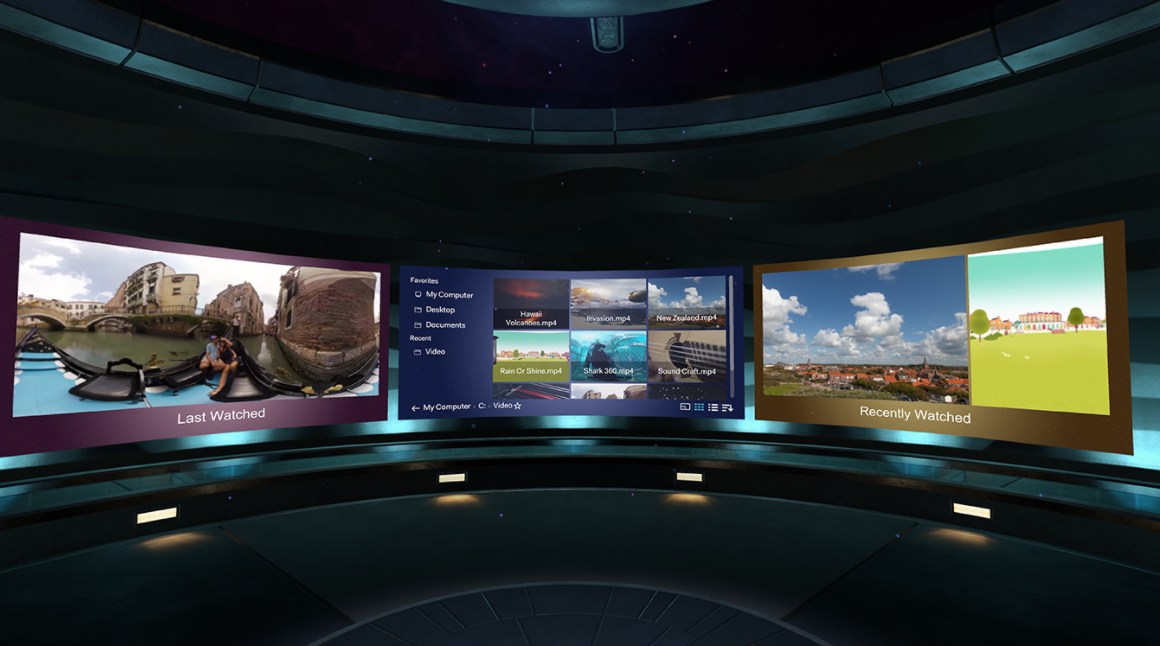
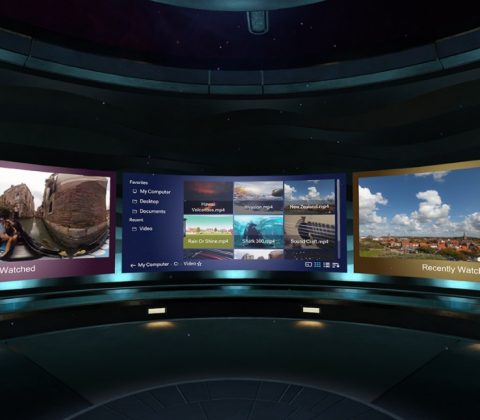
Vive Video puts a personal home theater in HTC’s VR headset
 We've seen VR video theaters for Oculus and PlayStation VR, and now HTC has an upgrade in that department. Vive Video supports all kinds of media: 2D, 3D, 180-degree or full 360-degree, with options to make the environment as much of a realistic thea…
We've seen VR video theaters for Oculus and PlayStation VR, and now HTC has an upgrade in that department. Vive Video supports all kinds of media: 2D, 3D, 180-degree or full 360-degree, with options to make the environment as much of a realistic thea…
Engadget RSS Feed
The Dyson 360 Eye is so complex you need a personal engineer to set it up
Dyson is looking toward the future with the 360 Eye, a robotic vacuum cleaner. Only problem? It’s so complex it requires an engineer to set it up. And perhaps that’s not too much to ask considering the huge price tag.
The post The Dyson 360 Eye is so complex you need a personal engineer to set it up appeared first on Digital Trends.
Meet Vi, the AI-based personal trainer that lives in your headphones
Meet Vi, heralded as a first-of-its-kind AI personal trainer, whose recently launched Kickstarter campaign has already blown past its initial funding goal of $ 100,000. Contained in a set of high-tech headphones, Vi is a new kind of wearable
The post Meet Vi, the AI-based personal trainer that lives in your headphones appeared first on Digital Trends.
Here’s a personal marathon trainer that fits inside your smartphone
Training for a 5k, 10k, half-marathon, or marathon? The Polar Running Program is here to help, offering personalized advice on how to properly train for a specific long-distance run.
The post Here’s a personal marathon trainer that fits inside your smartphone appeared first on Digital Trends.
Get motiviated: New fitness app partners you up with a personal trainer
If you need an impartial, outside source of motivation to get fit and healthy, then Goqii’s new fitness app partners you up with a personal trainer, ready to spur you on, and monitor your goals.
The post Get motiviated: New fitness app partners you up with a personal trainer appeared first on Digital Trends.
Lingohop wants to make language learning personal, relevant to you
Lingohop is a new language-learning platform that launched on Kickstarter. It works through four-minute lessons based on topics you choose, and aims to teach you a language through relevant conversations you want to have.
The post Lingohop wants to make language learning personal, relevant to you appeared first on Digital Trends.


